From Water Quality to Cancer, Meet 6 STEM Students Solving Real-World Problems
Cancer antibodies, water filters, prosthetic limbs, biodegradable bandages, even clothing that helps fight depression showcased in national contest
By Lauren Wagner | April 8, 2025Prosthetic hands, water quality detection tools powered by artificial intelligence and biodegradable bandages were among the 106 student inventions and projects showcased recently at the National STEM Festival in Washington, D.C.
The March event was the culmination of the second annual STEM competition hosted by EXPLR, a national curriculum company. Students in grades 7 to 12 were invited to submit projects last fall that addressed real-world problems in six categories: aerospace, food, technology, health and medicine, energy and the environment.
From thousands of submissions, 106 students from 47 states and four U.S. territories were selected as National STEM Champions and advanced to the festival to present their findings.
Here are six students who attended the festival and their innovations:
Sammit Chidambaram, 16
Junior at Dunlap High School, Dunlap, Illinois
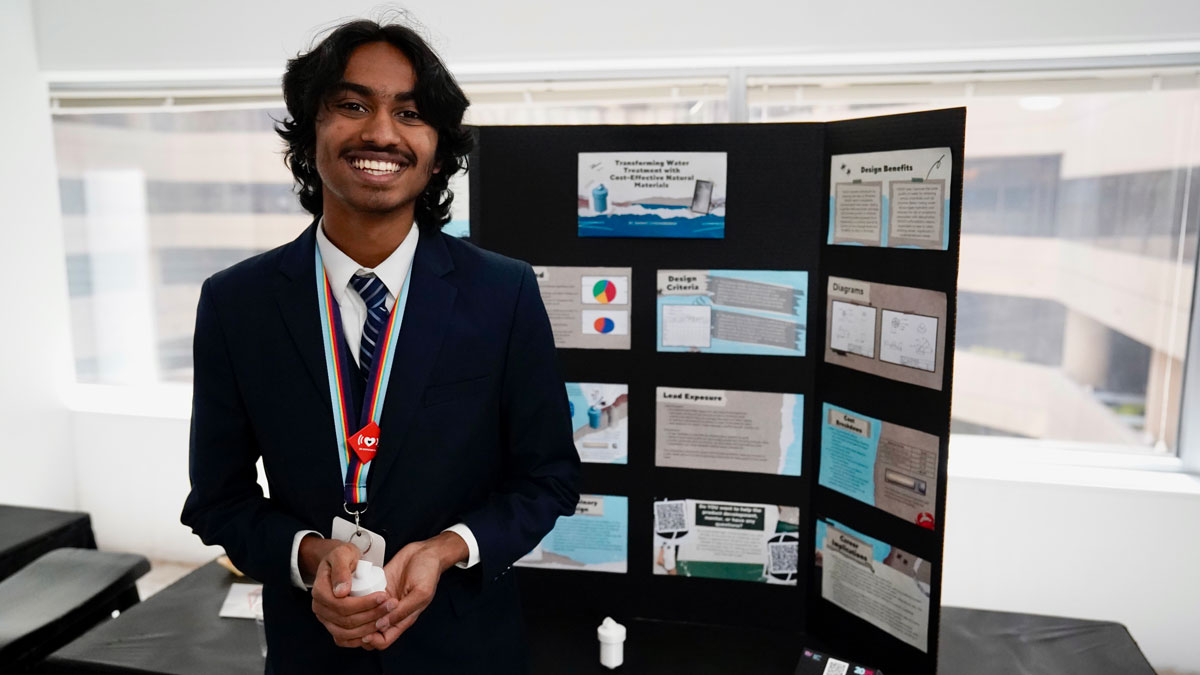
Sammit came up with the idea for his project during his high school engineering and design class.
He wanted to explore how to remove contaminants from water in a cost-effective way after learning how many lead water lines still exist in Illinois — and their impact on children. One 2024 study found that nearly 70% of young kids in Chicago are exposed to lead through drinking water.
Sammit’s idea developed from a pipe filter to a removable spout for public water fountains.
“I simply made a spout for the water fountains and put certain filters inside of it — like biochar filters as well as hollow fiber membranes — which both assist with removing different types of heavy metals,” he said. “I was actually able to screw these onto water fountains and get it to work. It’s a much lower-cost alternative to the normal methods.”
Sammit’s product costs about $5.50 apiece, which would be easier for low-income schools to purchase instead of removing lead pipes from their buildings, he said.
“I’ve done science fairs since eighth grade, and it’s just really, really fun. Not only nerding out about what I like, but watching other people nerd out about their own projects,” he said. “Being a STEM Champion has kind of given me the motivation and, honestly, the confidence to continue working on this project, and I’m really excited to see where I can move with it next.”
Divinefavour Osuji, 17
Senior at Lane Technical High School, Chicago
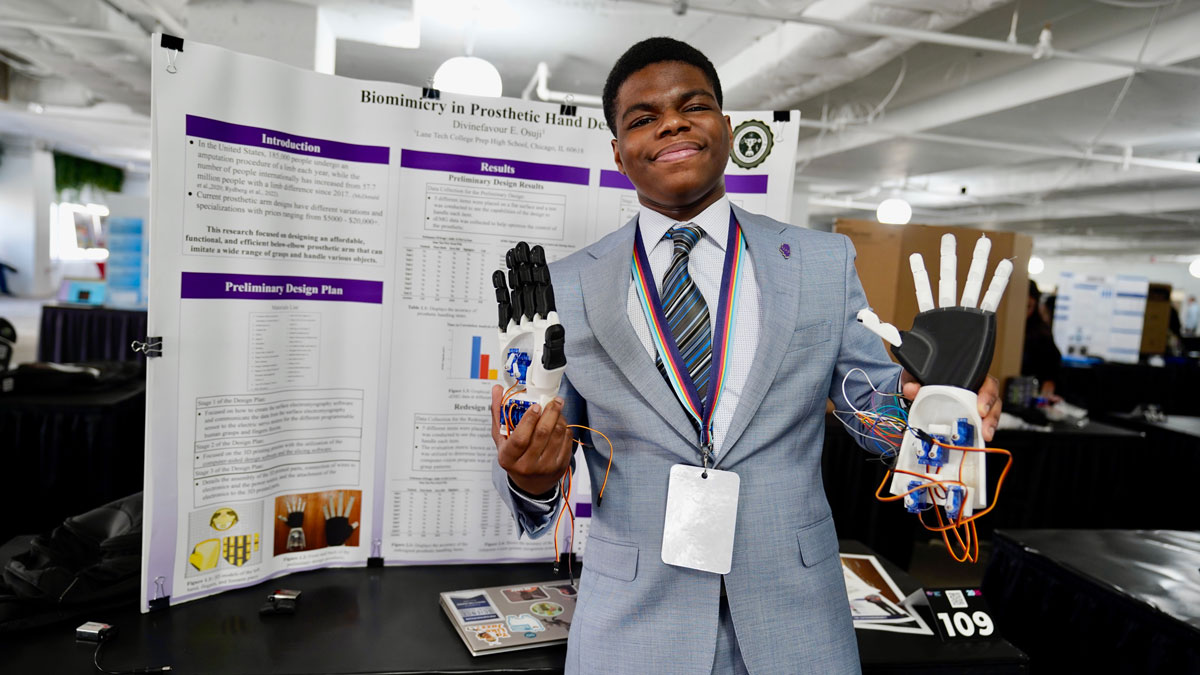
Divinefavour is from Nigeria, where workers sometimes lose their limbs in industrial accidents. Because each prosthetic can cost thousands of dollars, Divinefavour wanted to create one that was cost-effective.
“With how much money the average family in Nigeria makes, they can’t necessarily afford to buy prosthetics,” he said. “Even in the United States, a cosmetic prosthetic can cost up to $5,000, and then myoelectric prosthetics — controlled by muscle contractions — can cost anything from $20,000 to $100,000.”
Divinefavour used 3-D printing to create two versions of a myoelectric hand prosthetic. The first design used surface muscle sensors attached to the prosthetic that tracked contractions, but the movements were sometimes inconsistent. His second design used computer recognition software to track hand motions.
“The idea is that you have a little camera module, and assuming the individual has another working limb, essentially what happens is the webcam views the movement of the hand and mimics that movement into the prosthetic design,” Divinefavour said.
Both versions were brought to the National STEM Festival.
Riddik Sri Satya Neetipalli, 12
Seventh-grader at Cab Calloway High School of the Arts, Wilmington, Delaware
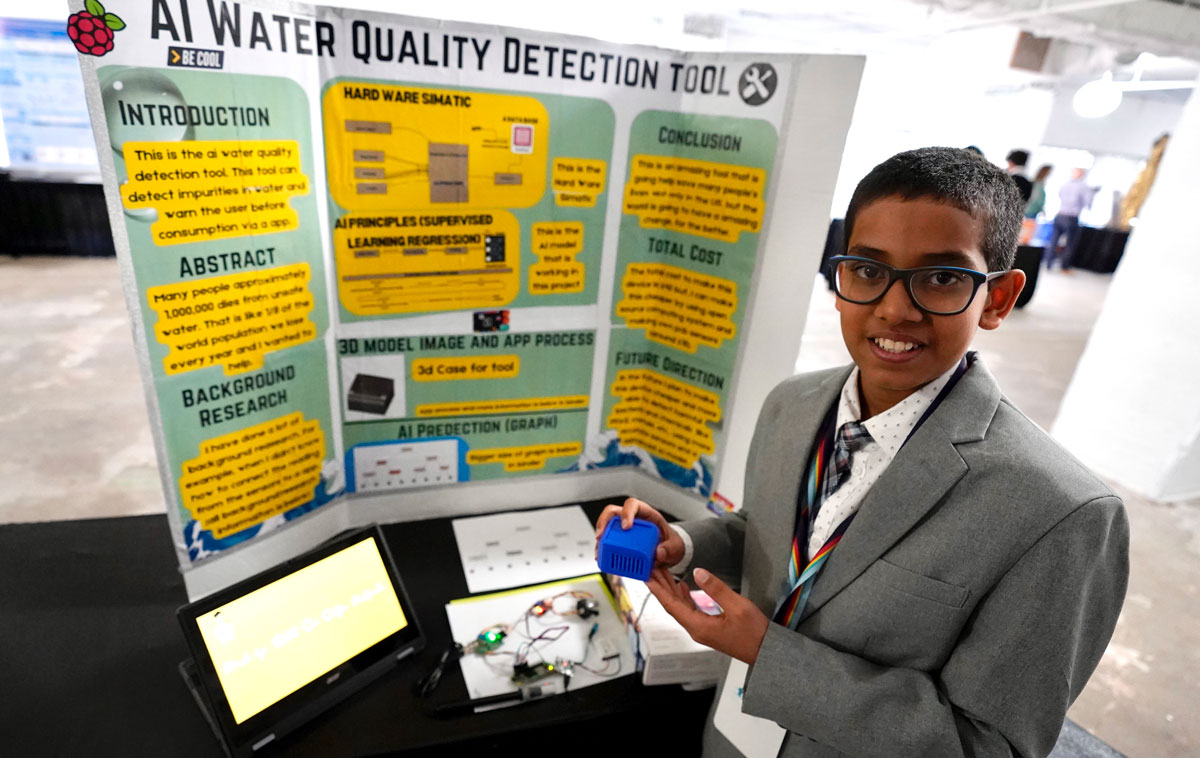
This is Riddik’s second year as a National STEM Champion. In 2024, he created a project to help capture water from air. His passion transitioned into inventing a water quality detection tool powered by artificial intelligence for this year’s festival.
After six months of work, Riddik created a small, hard case with data sensors that can be placed in water and detect pH level, temperature and cleanliness. The information is transmitted to a smartphone app.
“It visually shows and tells people if their drinking water is safe,” he said.
Riddik said he wants to continue STEM through school and eventually become CEO of his own company that helps people around the world.
“Since a young age, I’ve really loved STEM,” he said. “I like learning new things and questioning things. I really like it.”
Bryan Hijam, 18
Senior at Baltimore Polytechnic Institute
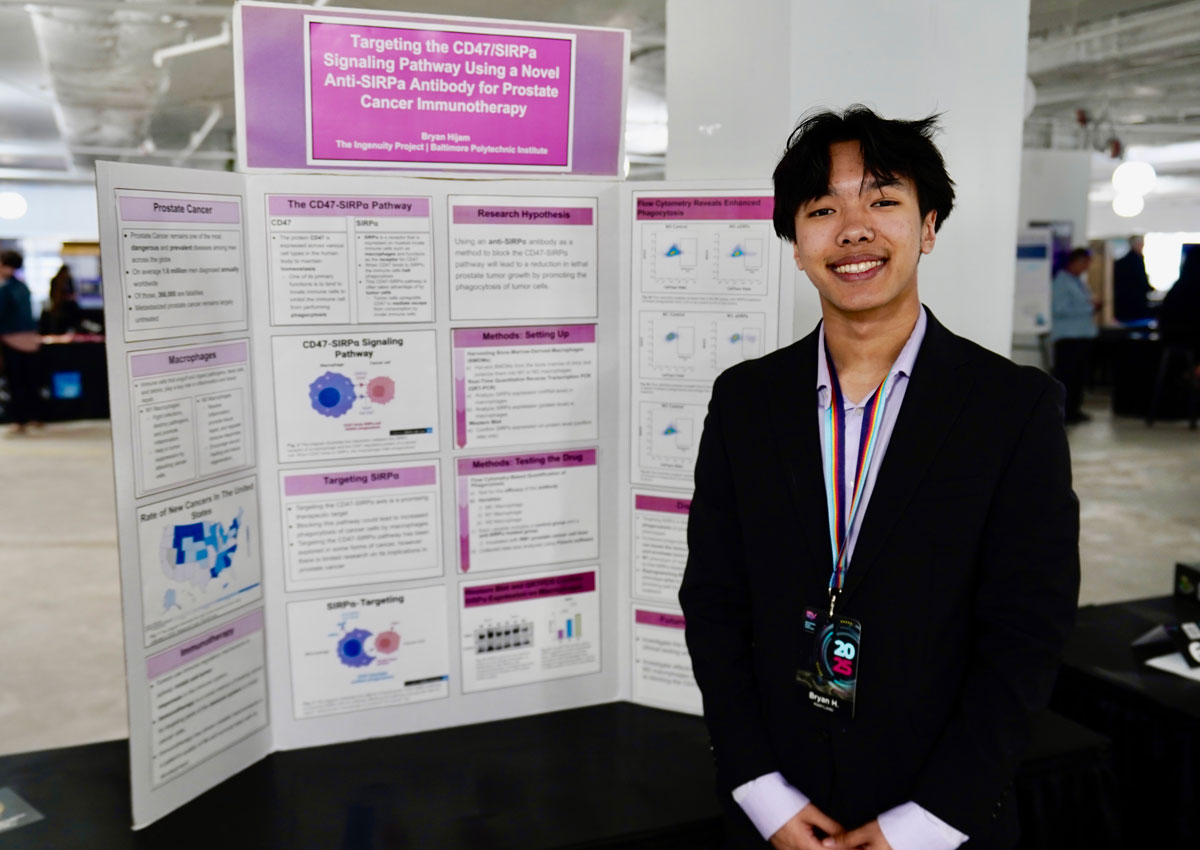
Hijam started researching prostate cancer after landing a position at a local professor’s lab while still in high school.
Through the Ingenuity Project, a Baltimore nonprofit for youth STEM education, Hijam was able to leave school early to work at the lab. More than a year ago, he began his experiment for the National STEM Festival and focused on helping the body recognize and fight prostate cancer.
Hijam’s project uses a synthetically developed antibody to target a pathway that cancer cells use to evade the immune system.
“My project aimed to block this pathway from happening,” he said. “So your immune cells are further able to recognize the cancer cells and then kill the cancer cells.”
Hijam’s goal is for the approach to be incorporated into immunotherapy, along with traditional treatment like chemotherapy, to improve outcomes for patients with advanced prostate cancer.
“The whole experiment as a whole took six months or seven months because there was a lot of trial and error,” he said. “I had to learn a lot of different techniques and read a lot of different essays. And some of those were the first time I’d ever done them.”
Aadhi Umamageswaran, 16
Junior at West High School, Salt Lake City
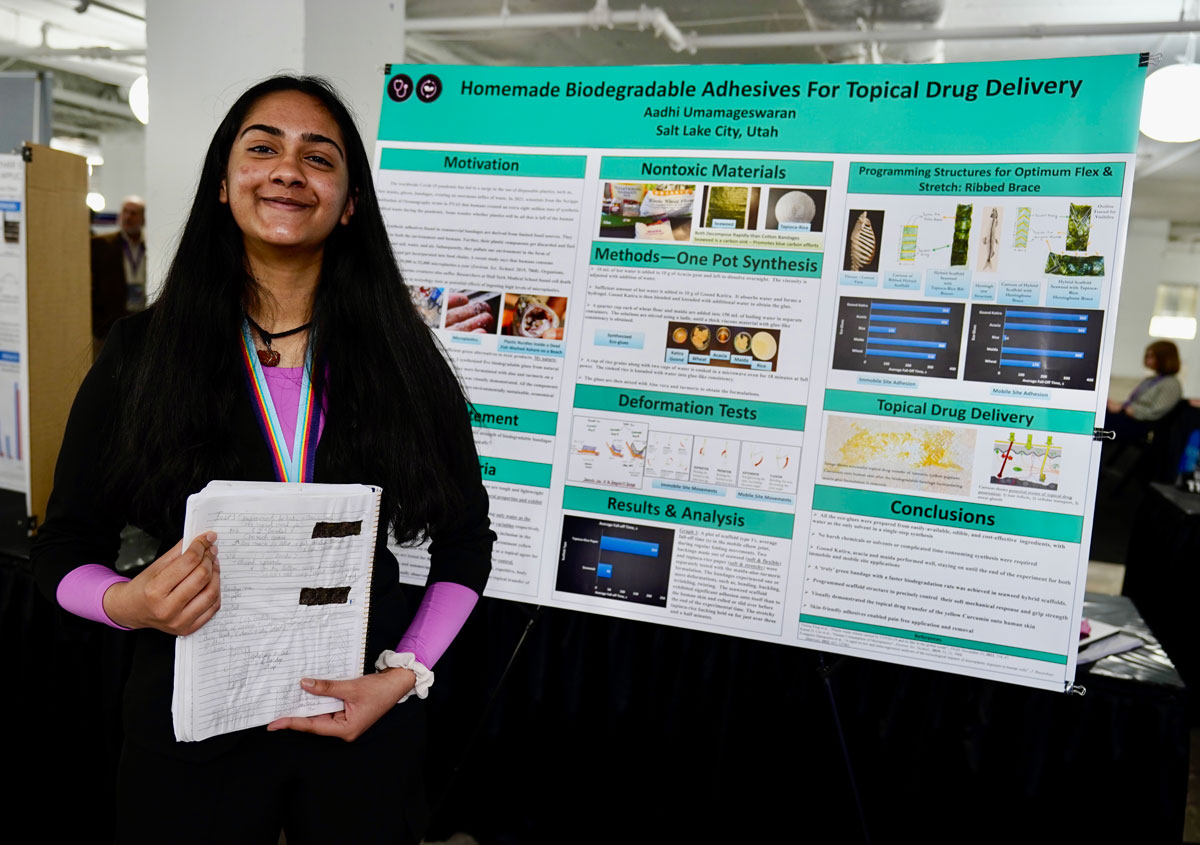
For her project, Aadhi created a green alternative to commercial bandages, which contribute to pollution from medical waste and microplastics.
“I basically made my own homemade biodegradable adhesive bandages for topical drug delivery from materials that I found in my kitchen pantry,” she said.
Aadhi said she made glue from flour, wheat and rice so her bandages could stick to skin. The glue is mixed with water and natural healing ingredients including aloe vera and turmeric. The bandages themselves are made out of seaweed and rice paper.
“I found that it withstands a lot of vigorous body movements, and it’s just as effective as commercial bandages, but a lot more cost-effective,” she said. “You can make them as you need them, and it won’t degrade into microplastics.”
Aadhi said she was excited to present her project to the public and for others to see what STEM can do.
“It’s really cool to learn about all the other problems that are happening in the world and really creative approaches to solving those problems,” Aadhi said. “It’s also cool to learn from others to see how we can improve our own project.”
Sara DeVolld, 17
Junior at Connections School, Soldotna, Alaska
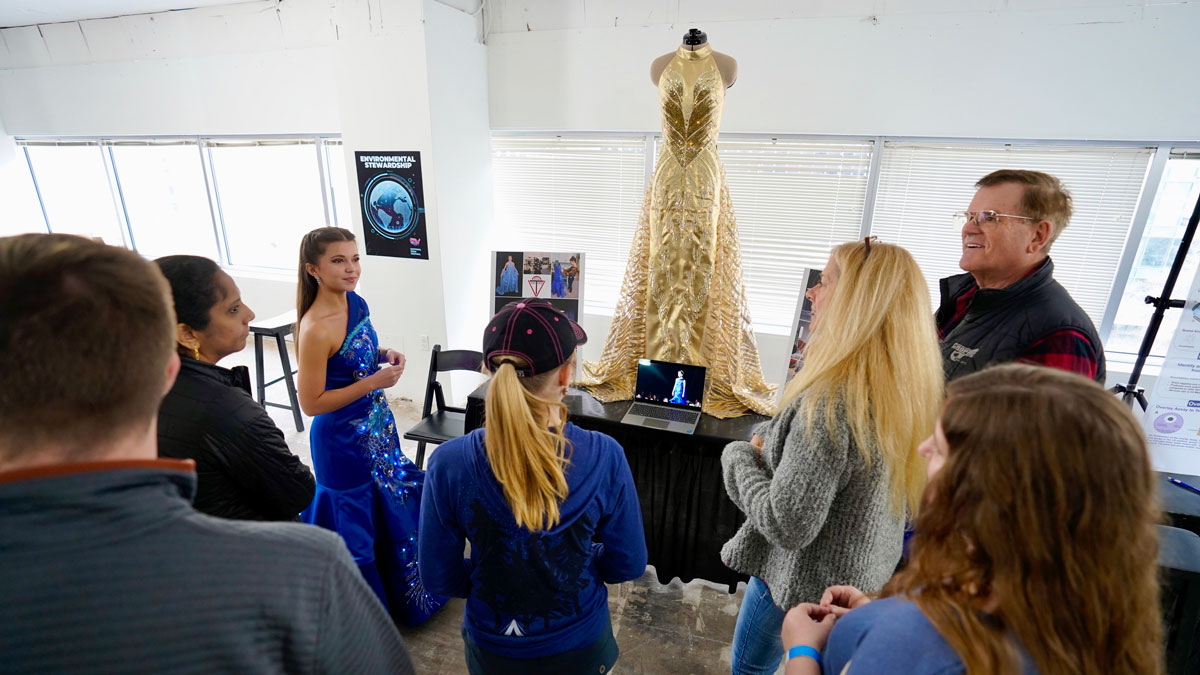
Alaska’s dark winters inspired Sara to create her own fashion design brand, which combines her passion for art with STEM.
She creates dresses and costumes with LED lights and motorized parts to bring “light and joy to a world that can seem dark and overwhelming.”
Sara said that because Alaskans are more prone to depressive conditions like seasonal affective disorder than people who live farther south, she makes her clothing to raise awareness of suicide prevention. In 2022, Alaska had the second-highest suicide rate in the nation.
Two of her projects were included in the National STEM Festival: a blue dress with LED lights and a gold gown that comes with a pair of 6-foot motorized wings. Each creation takes her 150 to 350 hours to make.
Sara said she’s received a lot of positive feedback for her products, especially for her work combining design and technology.
“I also want to show young women that we don’t have to choose between the arts and the sciences,” she said. “I want to share with them that we can do both.”
Get stories like these delivered straight to your inbox. Sign up for The 74 Newsletter

